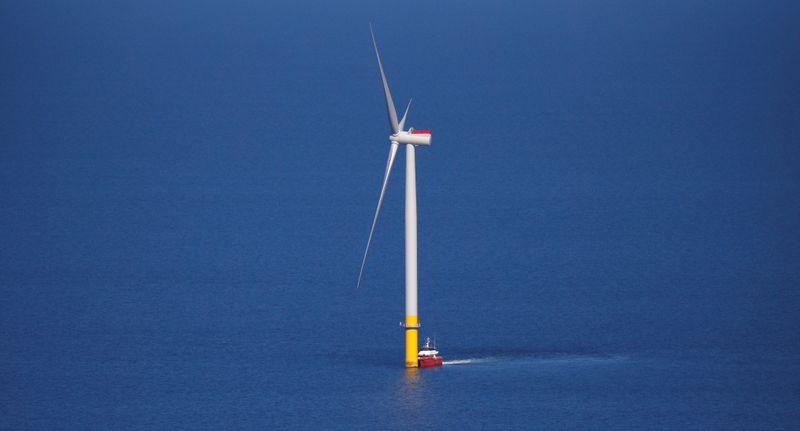COPENHAGEN, (Reuters) – Denmark is moving forward with plans to build an artificial island tying in power from offshore wind farms of up to 10 gigawatts (GW) of capacity, more than enough to supply all households, as part of efforts to meet ambitious climate change targets.
Denmark is home to wind turbine giant Vestas and the world’s largest developer of offshore wind,, and recently approved a law which targets reducing greenhouse gas emissions by 70% by 2030.
The energy ministry is looking for the right location to build one or more islands surrounded by offshore wind farms with a total capacity of at least 10 GW – equivalent to 10 million European households’ electricity consumption.
Denmark covered 41% of its electricity demand from wind energy in 2018, the highest level in Europe.
The project is crucial to meet Denmark’s legally binding climate act, one of the world’s most ambitious, which was passed by a broad majority in parliament on Friday.
But the plans could cost as much as 200-300 billion Danish crowns ($29.5-44.2 billion), the vast majority of which will be financed by private investors, according to the ministry.
Denmark, which has a population of around 6 million, has set aside 65 million crowns to research how the energy coming into the hub can be stored or converted into renewable hydrogen as all the power generated will not just be used by domestic customers.
It hopes that new technology will make it possible to replace fossil fuels with renewable energy in sectors such as transport and industry.
“If we really are to realise the enormous potential of offshore wind we must develop technologies of the future to convert the green power into fuel for aircraft, ships and industry,” said climate and energy minister Dan Jorgensen on Tuesday.
Hydrogen produces water when it burns rather than the greenhouse gas CO2, offering a clean fuel if it is produced from renewable sources such as wind or solar energy, rather than from oil and gas, the source for much of the hydrogen produced now.
Interest in renewable hydrogen is growing as heavy industry, aviation and shipping look for ways to reduce their carbon footprint.





